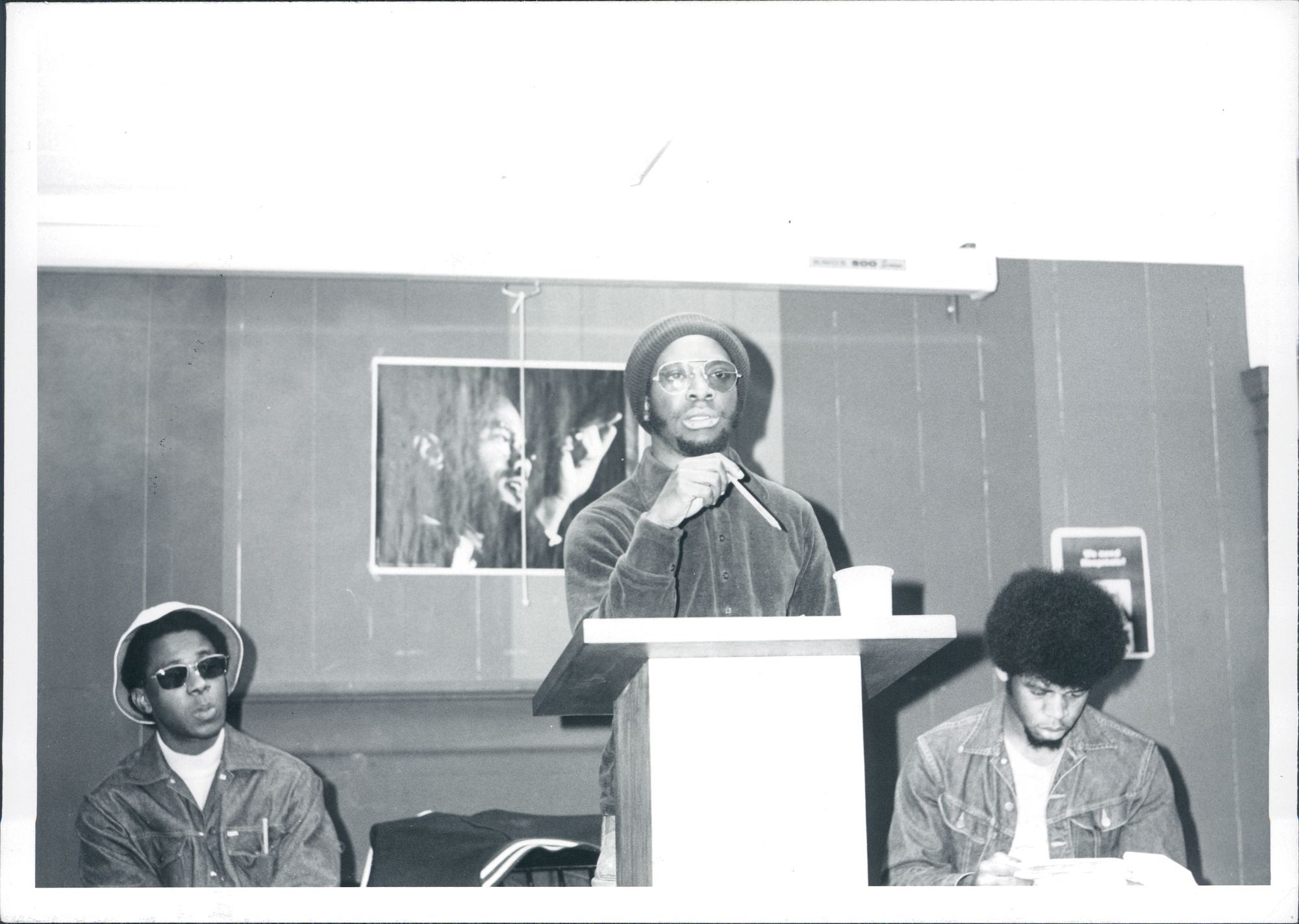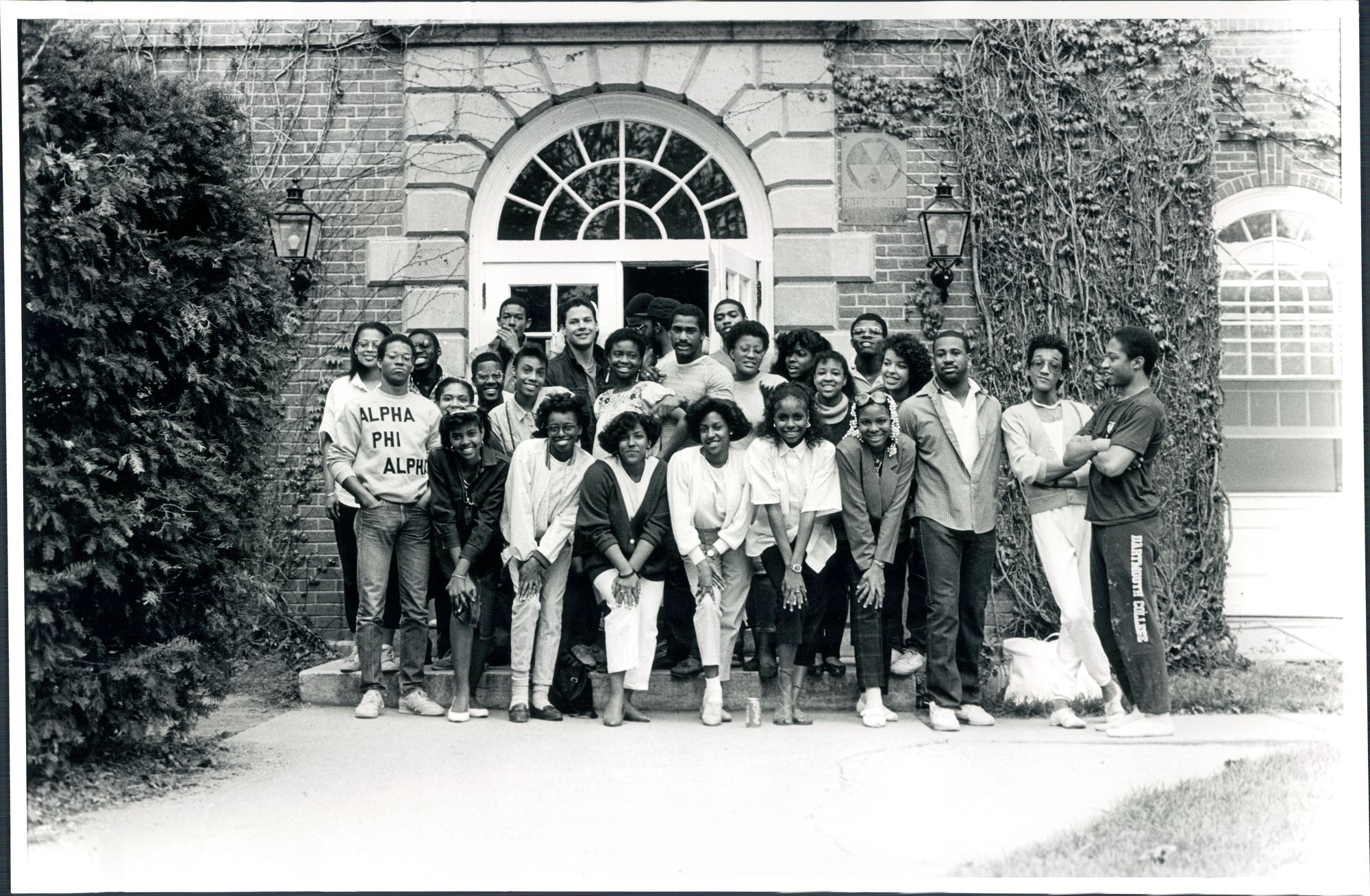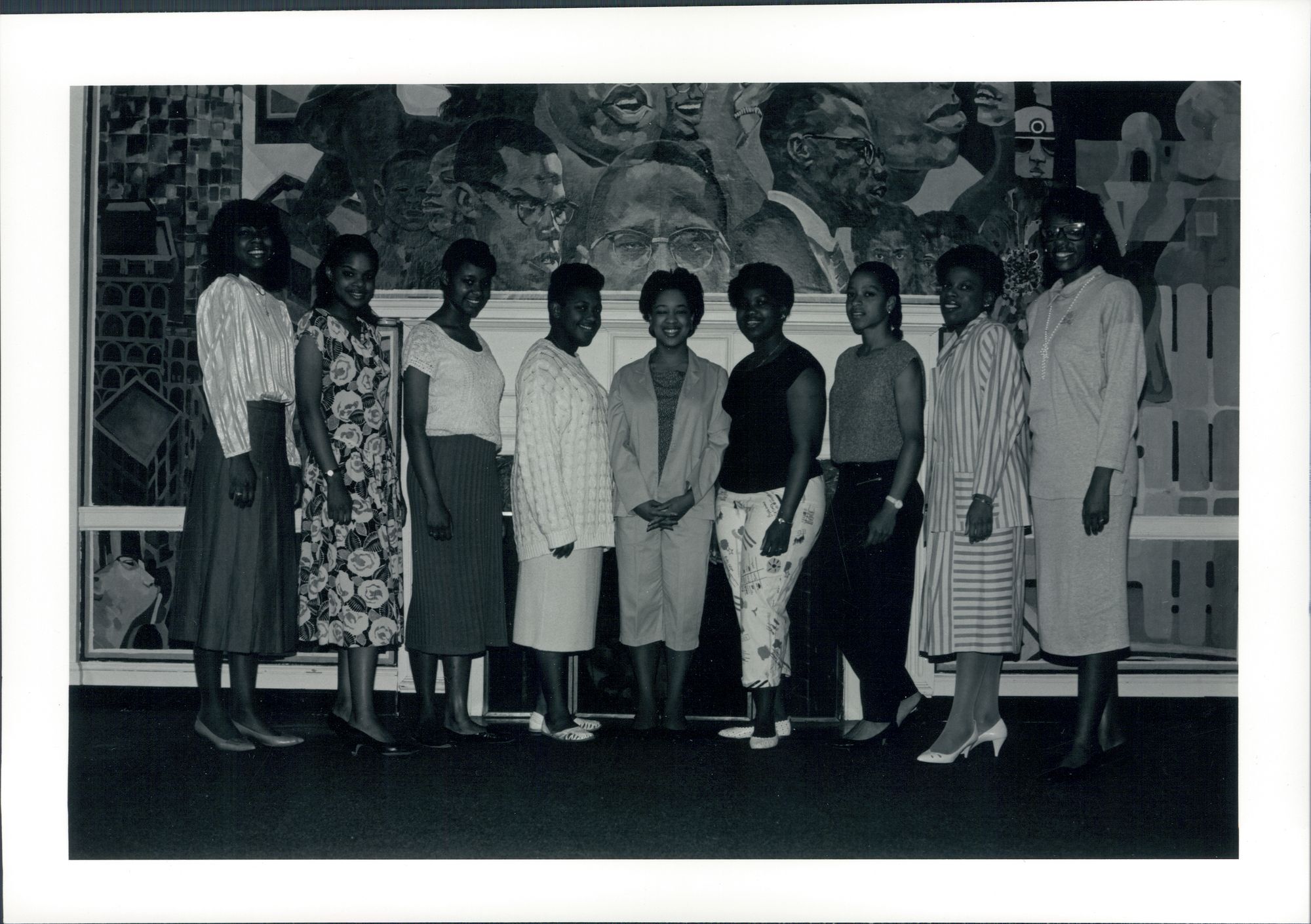"The Community rallied around us": Dartmouth's Black Community
The Afro-American Society formed in the 1960s was (and continues to be) a major part of the lives of many Black students at the College. During her time as a student, Ms. Cave served as the president of the Afro-American Society, the first woman to assume the position. When speaking about this time in her Dartmouth career, she touched on how the Afro-American Society enriched the Black community on campus by creating unity. She told me "...the whole focus was the Black community coming together to address the concerns of Blacks and Black students on campus." In this picture, a Black student stands at a podium as he leads a meeting of the organization.
Ms. Cave collaborated with Monica Hargrove and Judi Redding once more after writing "Institutional Racism and Student Life at Dartmouth" for a piece titled "Open Letter to the Black Community." The piece, which includes the lyrics to Sly and the Family Stone's "Stand!" and a short message afterward, was published in Black Praxis, a student magazine focused on discussing issues involving Black students. The three students used this as a way to both encourage other Black students and thank them for the support they'd showed.
During Ms. Cave's time on campus, Dartmouth's chapter of Alpha Phi Alpha, a Black fraternity, was just getting started. Cave had her own personal connection with the fraternity, as her boyfriend was one of the chapter's founders, but the fraternity also had a large impact on the Black community as a whole. She touched on its impact on Black students at Dartmouth in our interview, emphasizing "their effort to organize, to be of service." Here, they are shown outside of a building on campus with many other Black students who themselves were not members of the organization.
A group of students are pictured here in front of one of the murals inside of Shabazz [Shabazz Center for Intellectual Inquiry], a building that has been vital to Dartmouth's Black community in recent decades. It has housed the College's Afro-American Society and many Black students, while also serving as a general safe haven.




